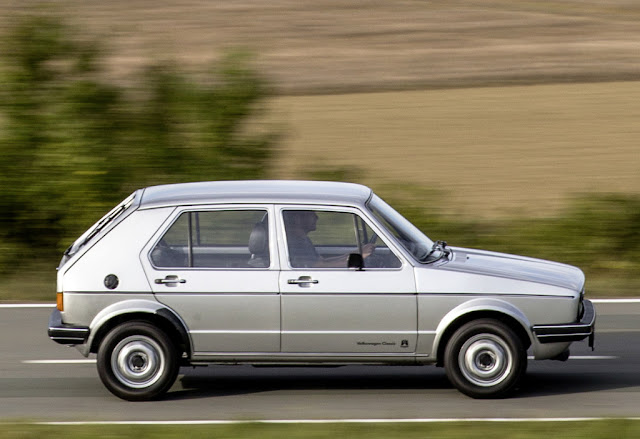Who does it better?

WHEN it comes to changing and updating cars, it's always been evolution than revolution from the Germans. If their cars are to be successful, more often than not, they stick to a winning formula and build on its success.
Many people do accuse them of playing it safe and being boring. But you can always argue on why fix something that isn't broken. The Volkswagen Golf, has recently had a mild revision. As expected, it doesn't look much different to the outgoing car and you'll have to play spot the difference to notice the updates. A real case of evolution over revolution.
The original Golf was a crucially important car for Volkswagen. After years of being reliant on the high-selling Beetle, its popularity was fading in the wake of newer and more sophisticated cars by the late 1960s – and well into the 1970s. They desperately needed a new car to replace the long serving and outdated Bug.
The Golf was to be the replacement for the old Beetle, and it was a radical departure from the old bug. Under the skin, was a front-engined, front-wheel drive hatchback that was powered by water-cooled engines. That was a solid, practical and efficient family car which went on sale in 1974.
Visually, the original Golf was equally as radical. Gone was the curvaceous shapes VW used on their long serving cars. In favour of a contemporary design, with crisp, clean lines and penned by the legendary Giorgetto Guigaro from Italian styling house, ItalDesign.
The original Golf was a huge success for Volkswagen. Which crucially saved them from becoming obsolete and going under, as it was an important that car that would either make or break them. By 1976, VW had already sold a million Golfs.
Then there's the legendary Golf GTi – a quick, practical and affordable performance car for the masses which pioneered the Hot Hatch. Which has been a roaring success and influenced the likes of Ford and Peugeot to make their own – creating a Hot Hatch frenzy in the 1980s. But that's another story for another time.
Having been a roaring success. It was understandable that VW stuck to a winning formula when it came to making newer incarnations of the Golf. More often than not, they have continuously refined and tweaked it over the years. Of course, it has grown in size over the years. More often than not, to comply with safety regulations, improve aerodynamics, performance, fuel economy, and to satisfy consumer demands.
What has made the Golf's design timeless, that it has always had a neat and understated design. VW has also continued to use design cues that have been – and continued to be used – on newer incarnations of the Golf that have followed on.
Some examples are the twin headlamps that adorn the front end of the car, and the thick C-pillar, that have become design hallmarks on the Golf. Which has made it it a motoring icon in its own right, and you can also go as far and say that it's been key to it becoming Volkswagen's best seller.
You look at the latest Golf, you can see the resemblance from the original car and that it's an evolution from its predecessors. To date (and at the time of writing), VW have sold over 30 million examples since the original first graced tarmac back over four decades ago.
Like what I mentioned before, that many people accuse of VW playing it safe when it comes to releasing a new Golf or updating one. You look at it from another angle, they cleverly do this to lure in new buyers. But without alienating those who are already familiar with the Golf, and making those with older Golfs feel inferior. It's human nature to people like things that are the same but different.
The Volkswagen Golf isn't the only car that has continuously evolved over time. Other examples include the Porsche 911, the Audi TT and the BMW 3-Series. The Germans are famous for evolving and tweaking their cars, but you can also say this about the Range Rover and the Mazda MX-5.



No comments:
Post a Comment
Have your say and leave a reply...